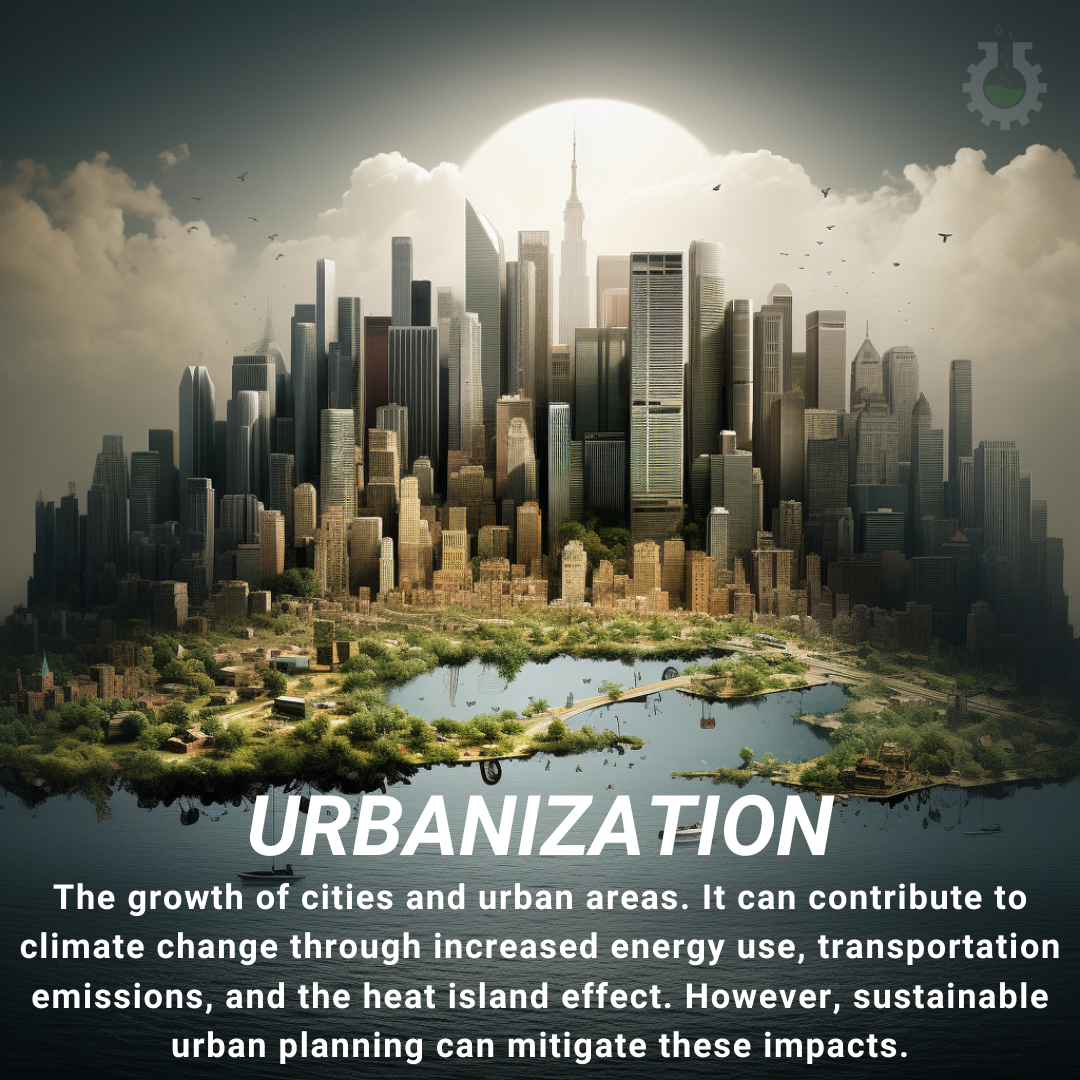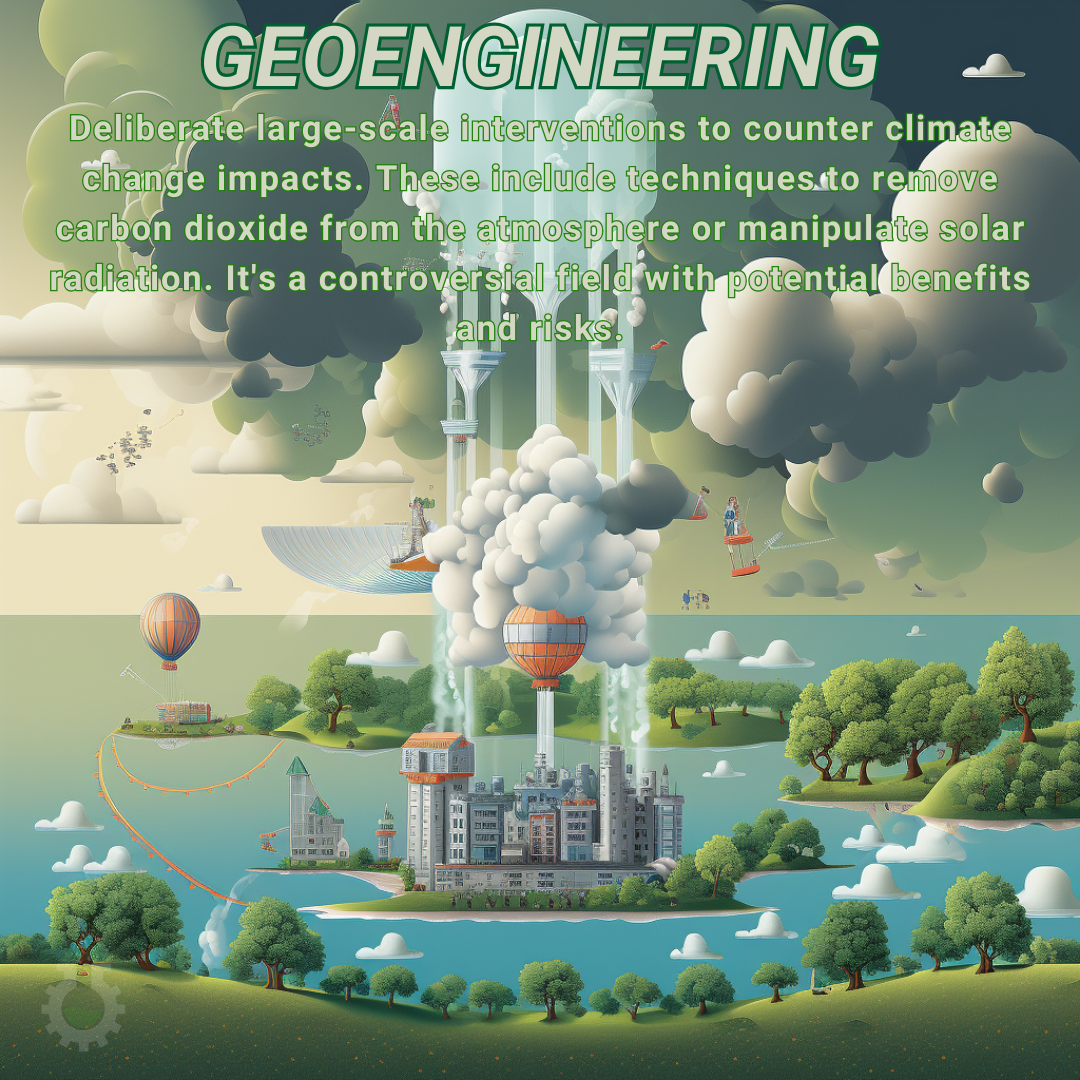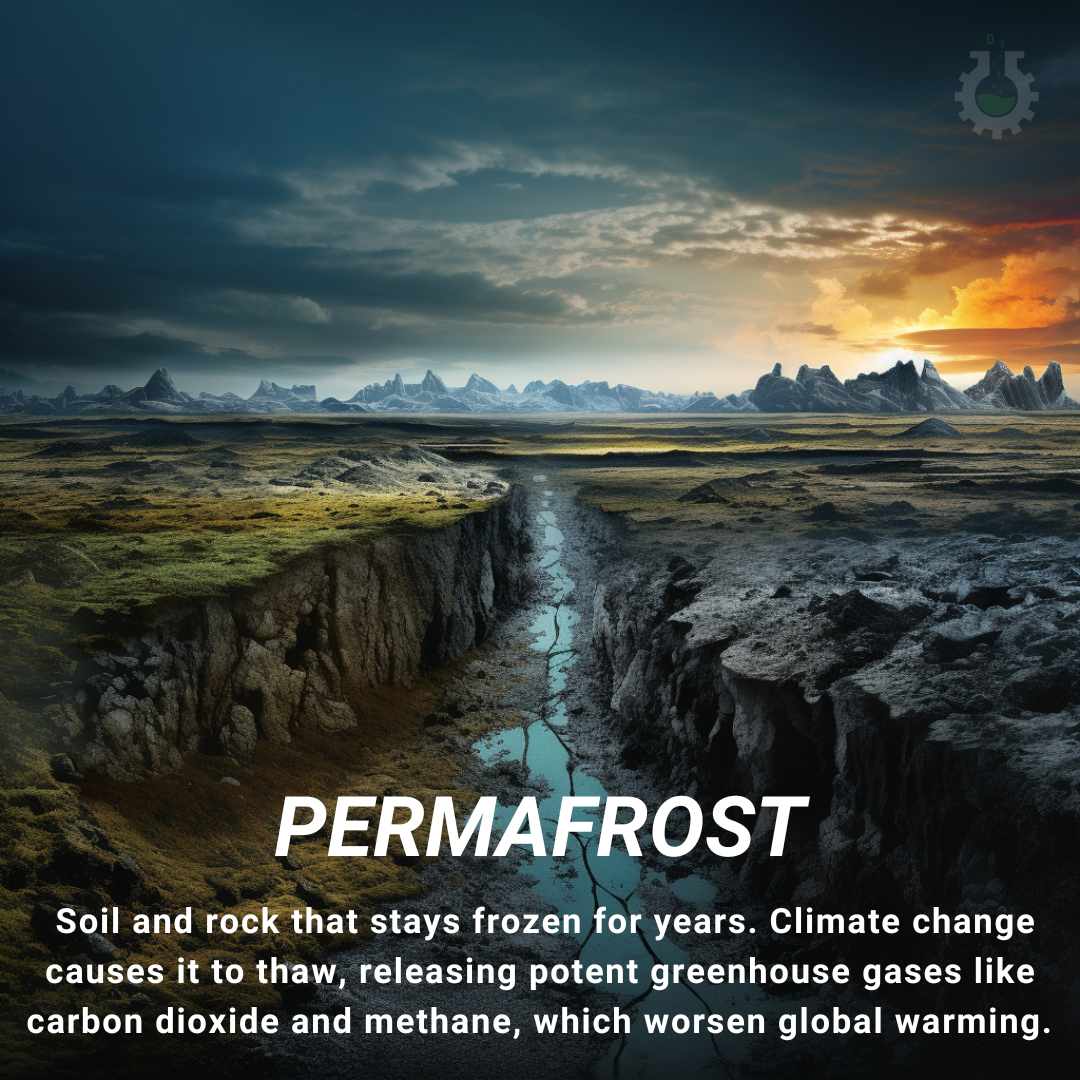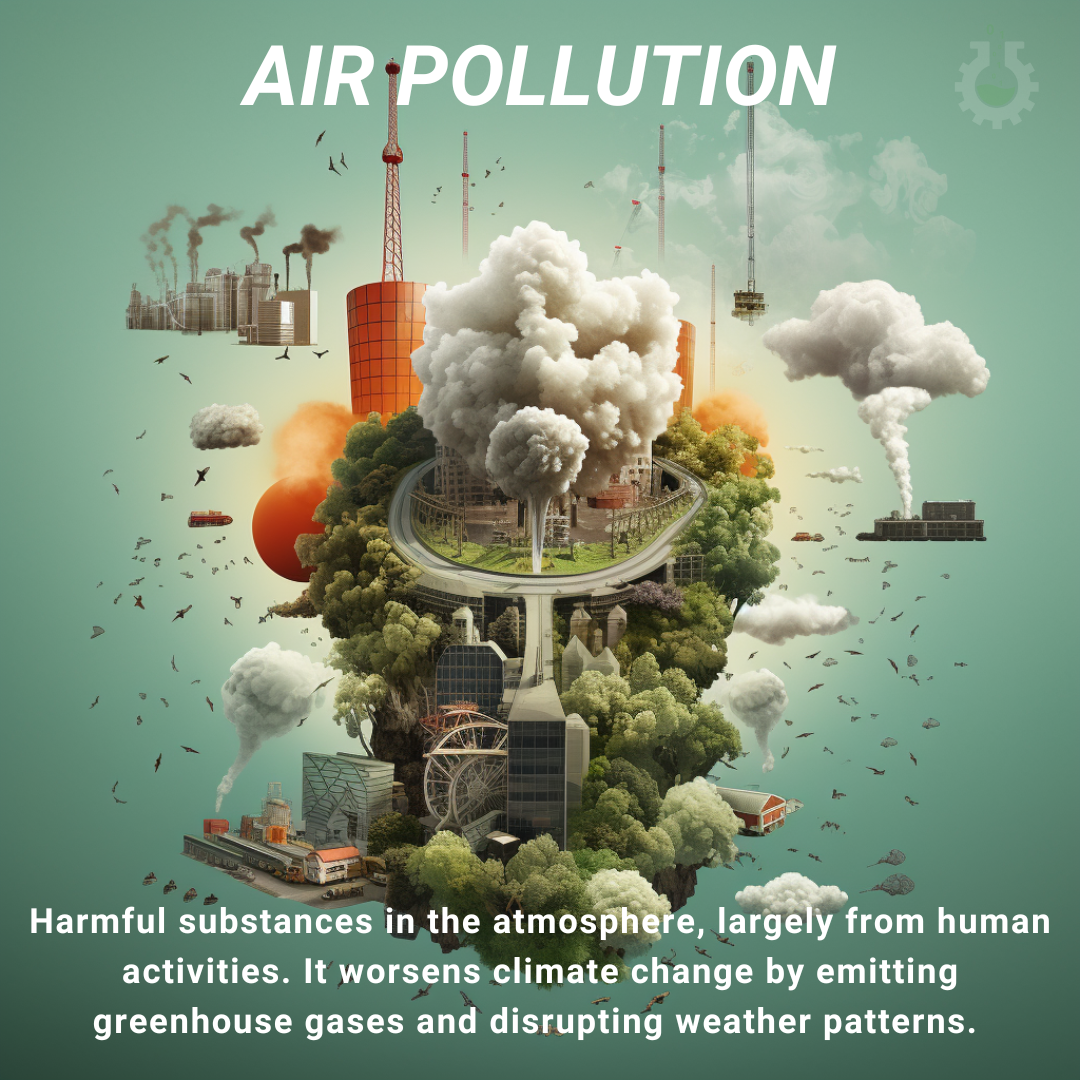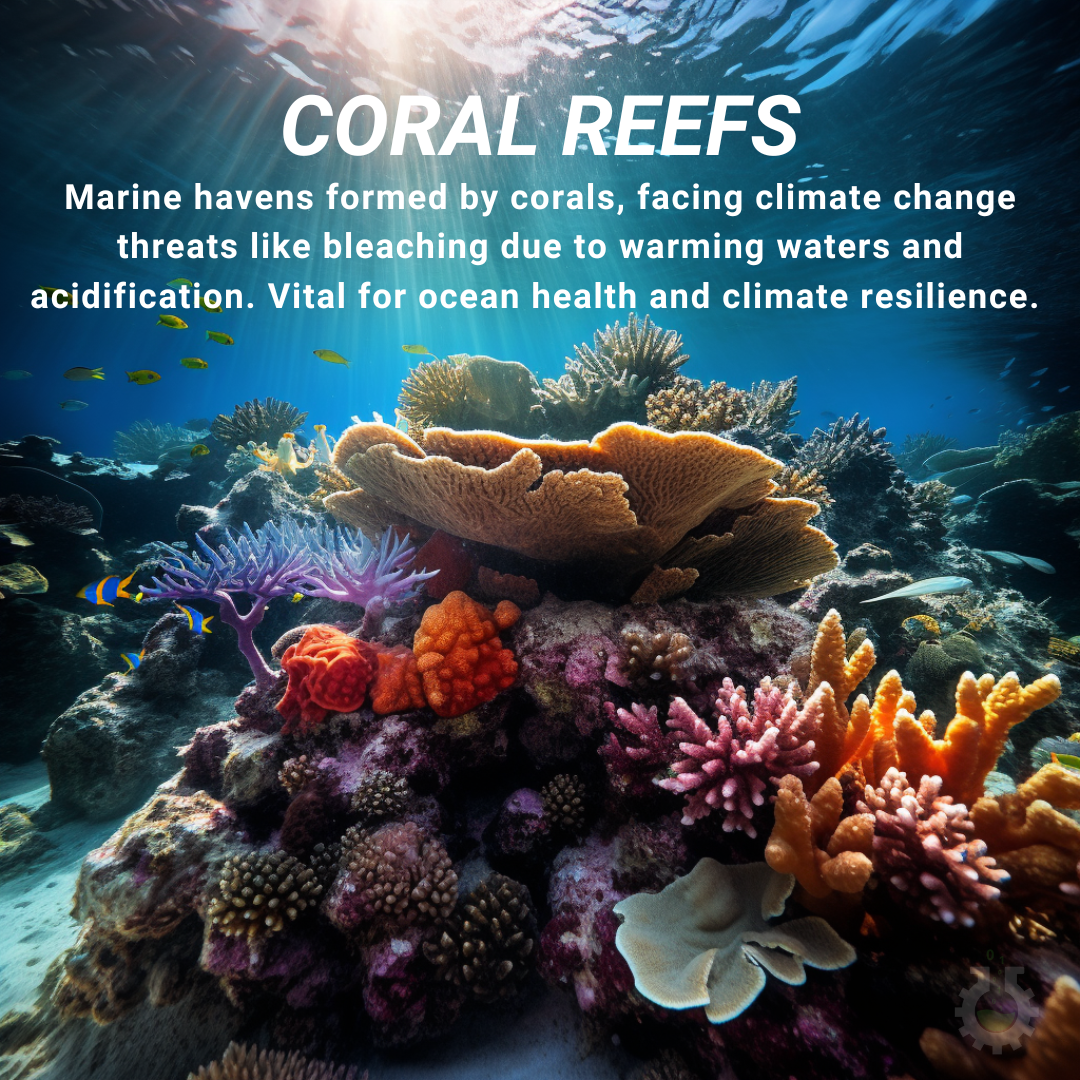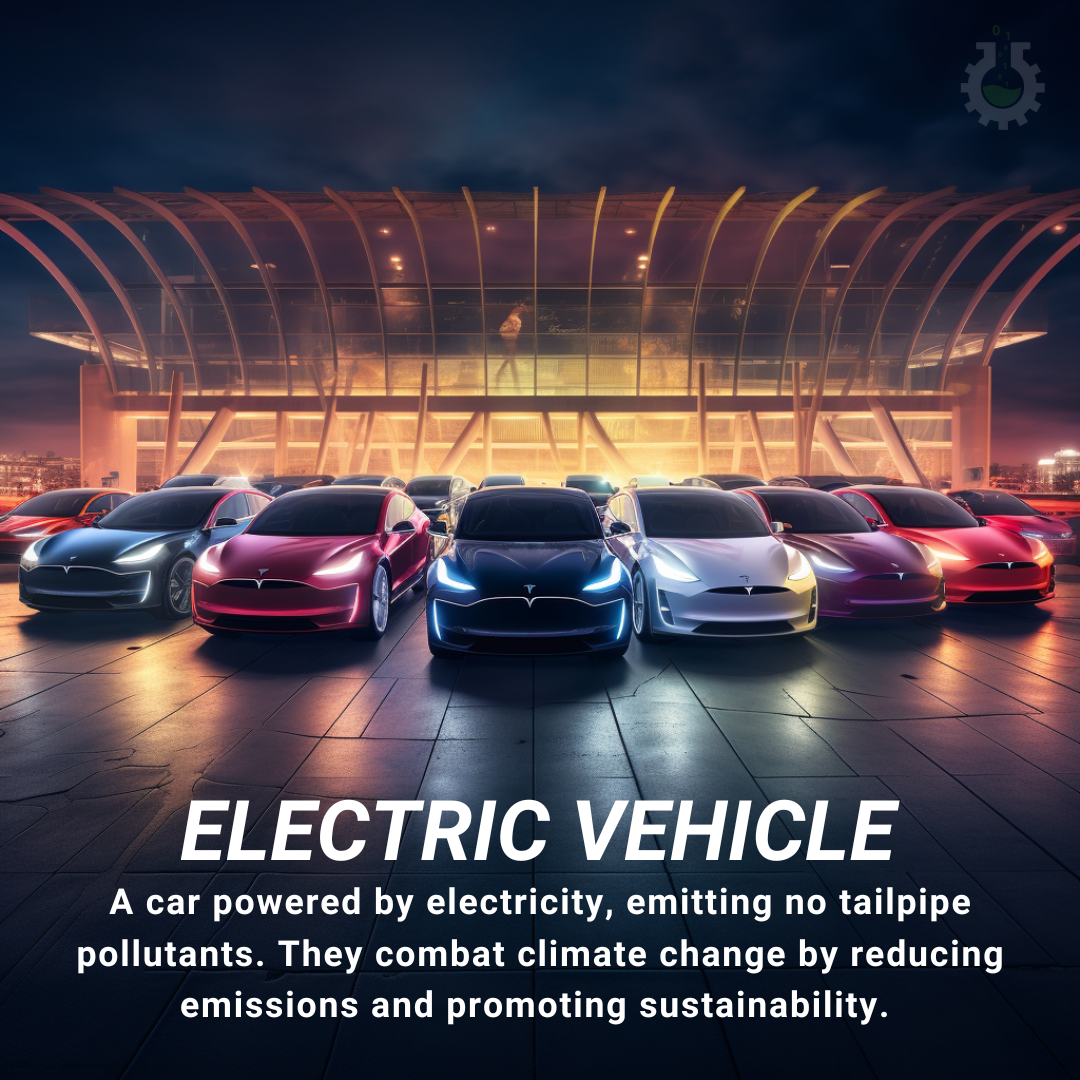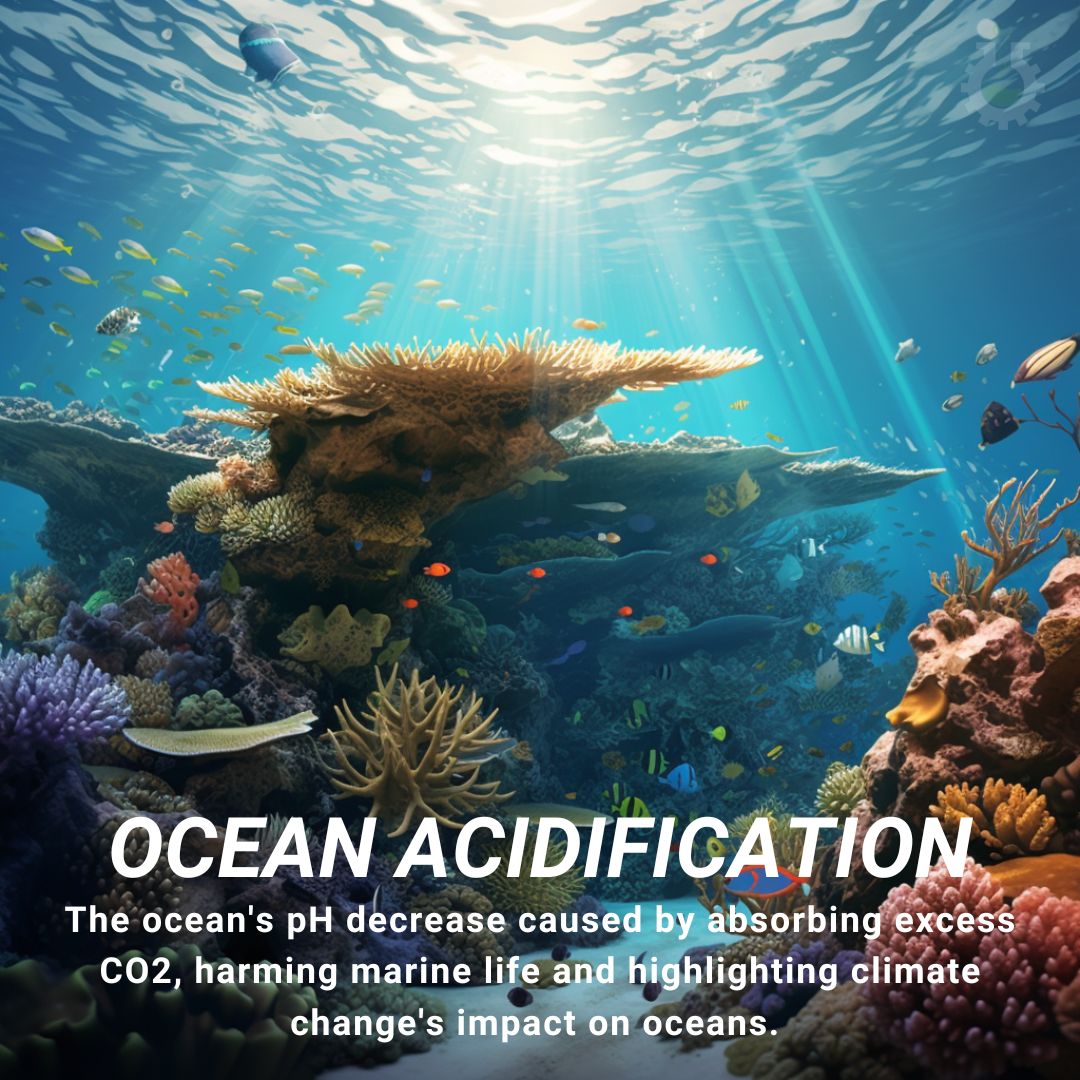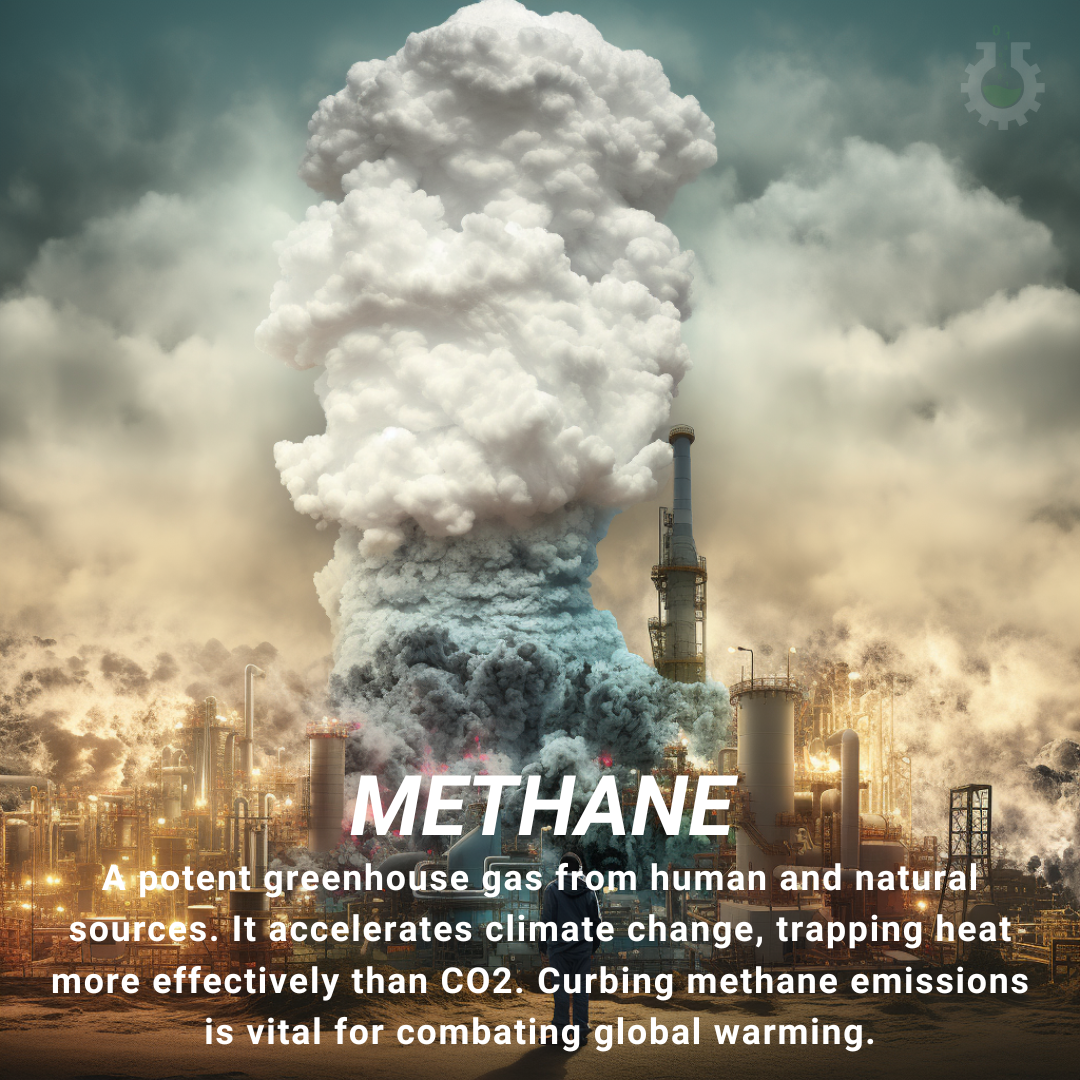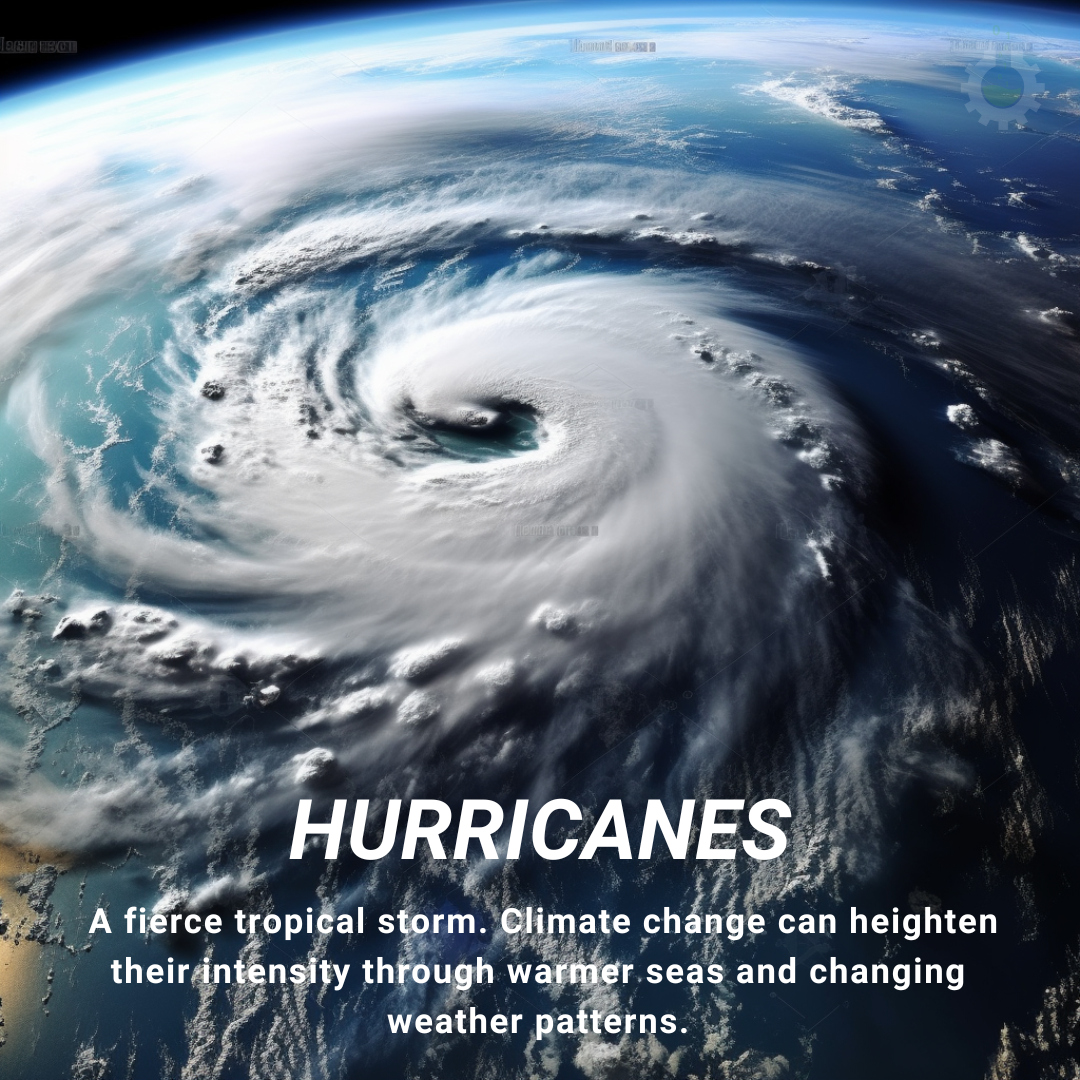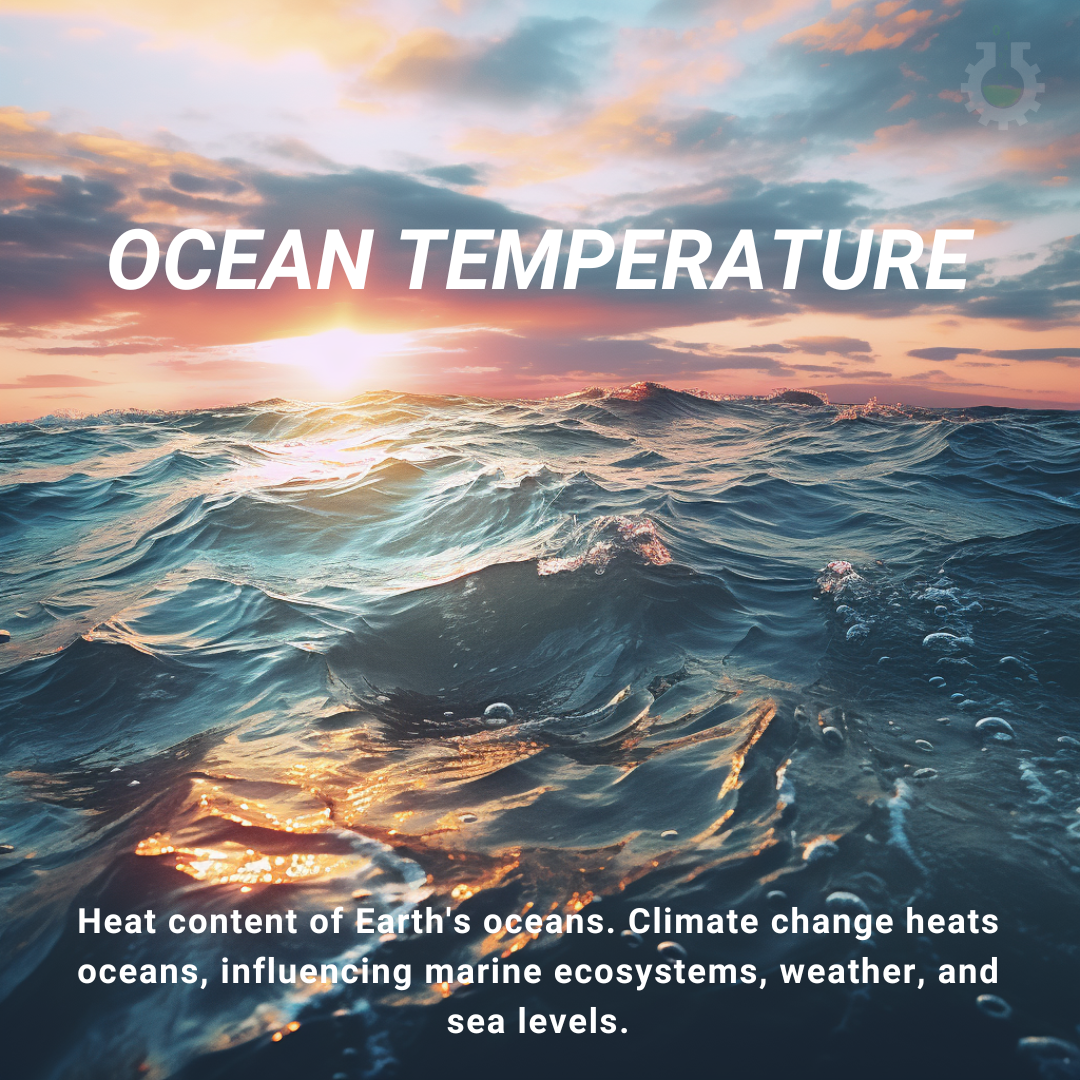Urbanization is the process of population concentration into cities and urban areas, often accompanied by the expansion of infrastructure, industry, and housing. This shift from rural to urban living can influence climate change in several ways. Connection to Climate Change: Urbanization can contribute to climate change through increased energy consumption, transportation emissions, and the heat […]
Geoengineering refers to deliberate and large-scale interventions in the Earth’s natural systems to mitigate the impacts of climate change or directly manipulate the climate. These interventions can take various forms, such as capturing and storing carbon dioxide from the atmosphere, reflecting sunlight away from the Earth’s surface, or modifying cloud properties to influence rainfall patterns. […]
Permafrost refers to soil, sediment, or rock that remains frozen at or below the freezing point of water (0°C or 32°F) for two or more consecutive years. It is typically found in polar regions, such as the Arctic and Antarctic, as well as in some high-altitude mountain areas. Permafrost contains organic matter, including dead plants […]
Air Pollution is the presence of harmful substances in the Earth’s atmosphere, primarily from human activities. Air pollution exacerbates climate change by releasing greenhouse gases and particulate matter, contributing to global warming and disrupting weather patterns. Tackling air pollution is essential for mitigating climate change’s adverse effects.
Coral reefs are complex marine ecosystems built by corals, providing habitat to a multitude of species. Climate change threatens coral reefs through rising sea temperatures and ocean acidification, causing coral bleaching and endangering marine biodiversity. Preserving coral reefs is crucial for ocean health and climate resilience.
An Electric vehicle is a vehicle powered by electricity stored in batteries, producing zero tailpipe emissions. EVs combat climate change by reducing greenhouse gas emissions from transportation, promoting cleaner air, and decreasing reliance on fossil fuels for a more sustainable future.
Ocean Acidification is the gradual decrease in the ocean’s pH levels due to the absorption of excess atmospheric carbon dioxide. This change disrupts marine ecosystems, particularly affecting shellfish and coral reefs, and underscores the profound link between climate change and its far-reaching consequences on the oceans.
A methane is a potent greenhouse gas emitted from natural sources and human activities, including livestock, fossil fuel production, and landfills. Its release intensifies climate change by trapping heat in the atmosphere more effectively than carbon dioxide. Tackling methane emissions is crucial for curbing global warming.
A hurricane is a powerful tropical storm characterized by strong winds and heavy rainfall. Climate change can intensify hurricanes, making them more destructive due to warmer sea temperatures and altered weather patterns. Understanding this connection is vital for preparedness and mitigation efforts.
Ocean temperature is the measure of heat in Earth’s oceans. Climate change drives ocean warming, impacting marine life, weather patterns, and sea level rise. Understanding this link is crucial for addressing the far-reaching effects of rising temperatures on our planet.


